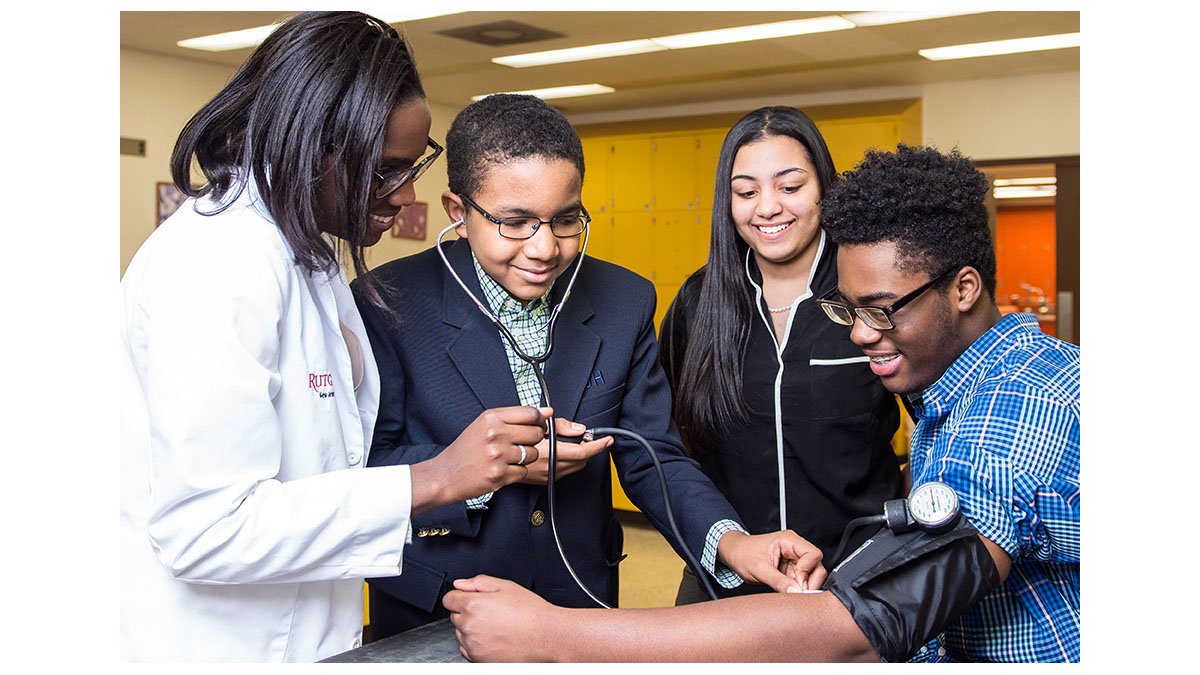Medical Schools Offer STEM Pipeline Programs
By Debra Shapiro

Teachers and students seeking additional learning opportunities in science, technology, engineering, and math (STEM) with a health care orientation can often look to their local medical schools for precollege STEM pipeline programs. Held both on medical school campuses and offsite, these programs are geared toward engaging students in STEM early on and giving students—especially underrepresented students—extra support in pursuing STEM majors and careers, including health care careers.
In Newark, New Jersey, for example, Rutgers New Jersey Medical School (NJMS) offers Science, Medicine, and Related Topics (SMART; see the website http://njms.rutgers.edu/smart), a pipeline program for underrepresented students interested in careers in medicine, dentistry, biomedical research, and other health-related careers. “We hold a Winter Academy for students in grades 6–12 and a Summer Academy for rising students in grades 7–12,” says SMART Program Administrator Mercedes Padilla-Register. Held on the NJMS campus, SMART is open to all New Jersey students, with preference given to students living in or near Newark.
The Winter Academy, which takes place on Saturdays, focuses on infectious diseases and public health. It features NJMS faculty—“scientists, doctors, nurses, or dentists”—who serve as guest lecturers to “inform students about their specialty,” explains Padilla-Register. “We try to invite faculty who look like the students and have the same background.”
Recently a New Jersey Institute of Technology faculty member shared his experiences in studying to be an engineer in the gas industry. “We want to expose students to science careers in general, not just in medicine,” Padilla-Register points out.
State-certified science teachers and medical students serving as teaching assistants also lead students in handson activities in applied science and technology, with a curriculum aligned to state standards. “The medical students are closer in age to the students, and they inspire students with their own stories of living and going to school in Newark. They provide mentoring and extra help to students,” Padilla-Register relates.
Many students go on to participate in the Summer Academy, and students can take both academies every year through 12th grade. “In the summer, we switch up the speakers so there are no speaker duplications,” notes Padilla-Register. The Summer Academy also includes educational field trips, community service (for 11th and 12th graders), and college and career counseling. Participation offers “a boost in the daily curriculum, which is good for disadvantaged students who might not be exposed to the content in their schools. There is time for hands-on activities like dissections,” which may not be offered in school due to lack of time and/or resources, she contends. “Most SMART students graduate high school and go to college,” reports Padilla-Register, “with about half continuing in science and medicine.”


